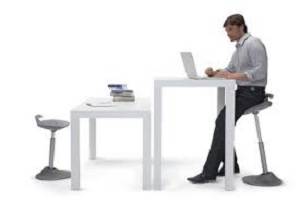March 18, 2013
Two thirds of workers sit at desk over six hours a day
 Two-thirds of office workers sit at their desk for over six hours a day – putting themselves at risk of back complaints. A survey by Office Angels found that 63 per cent of workers spend six hours or more sitting at their desk, over half (51 per cent) slouch in their chair and nearly half (48 per cent) admit to not leaving the office all day. A fifth (21 per cent) of people also admitted to taking their work home with them and a third (32 per cent) work late on a regular basis. The study ‘Work happy, Work well”, which looks at the nation’s wellbeing and bad habits in the workplace reveals that sales, media and marketing (60 per cent) and finance (54 per cent) are the sectors with the highest number of desk bound workers.
Two-thirds of office workers sit at their desk for over six hours a day – putting themselves at risk of back complaints. A survey by Office Angels found that 63 per cent of workers spend six hours or more sitting at their desk, over half (51 per cent) slouch in their chair and nearly half (48 per cent) admit to not leaving the office all day. A fifth (21 per cent) of people also admitted to taking their work home with them and a third (32 per cent) work late on a regular basis. The study ‘Work happy, Work well”, which looks at the nation’s wellbeing and bad habits in the workplace reveals that sales, media and marketing (60 per cent) and finance (54 per cent) are the sectors with the highest number of desk bound workers.





























March 2, 2013
Google and Yahoo office strategies teach us the value of the velvet glove
by Mark Eltringham • Comment, Facilities management, Technology, Workplace, Workplace design
More →